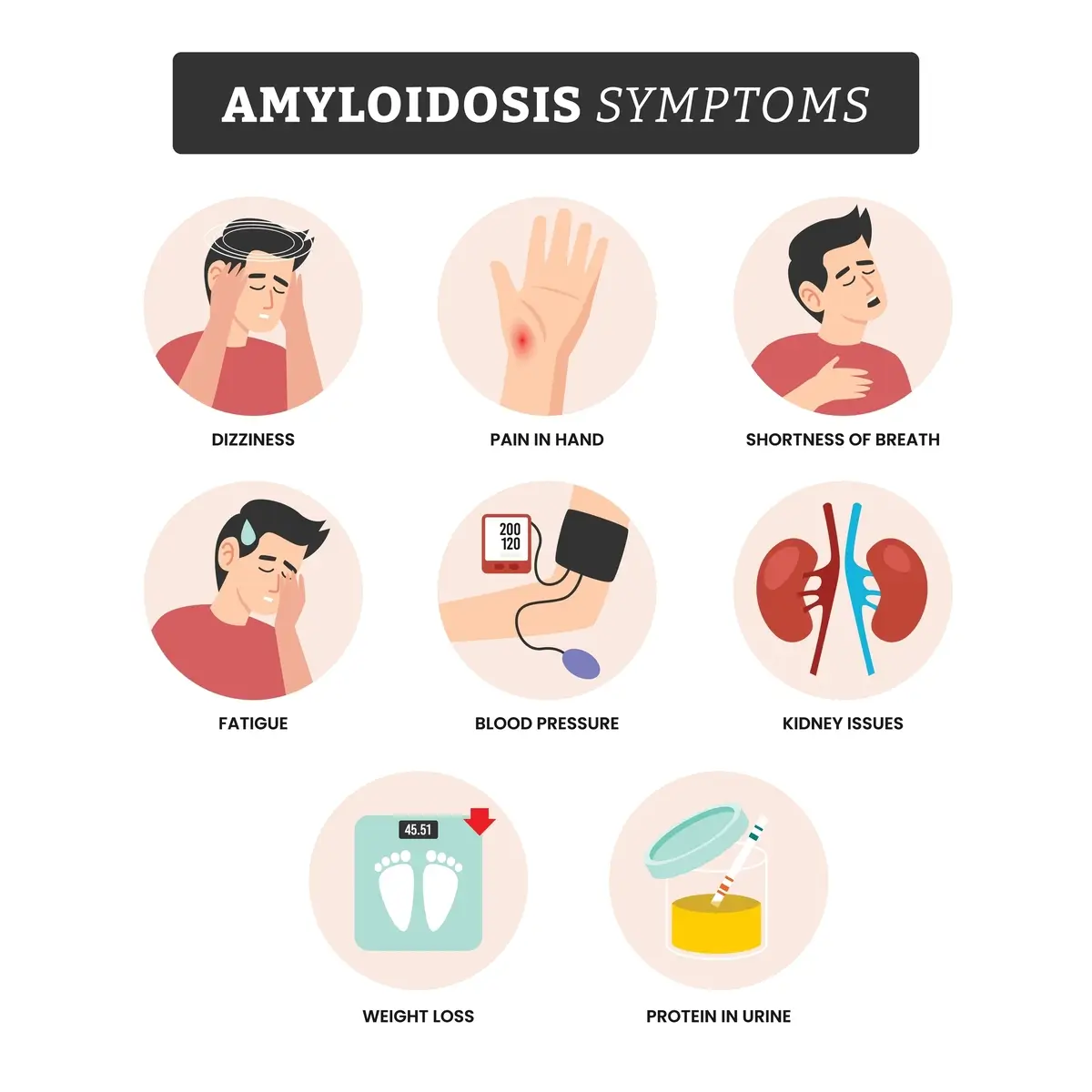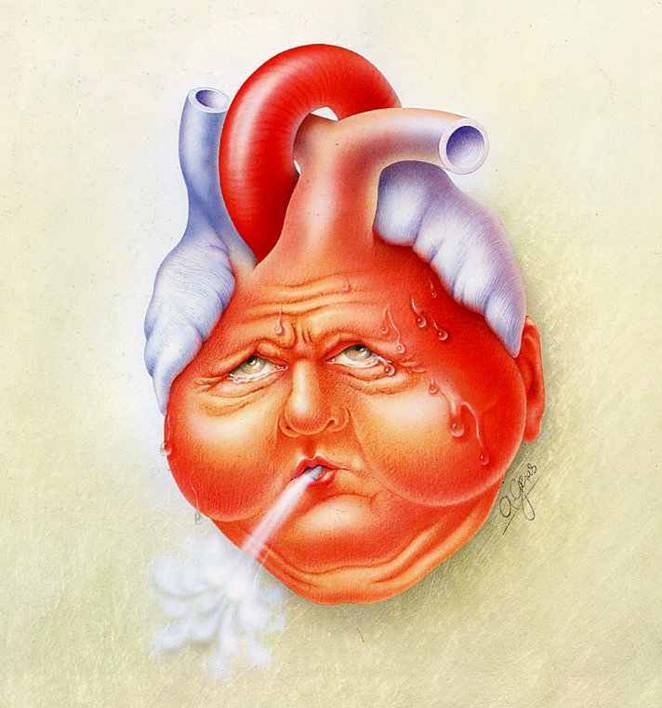Cardiac Amyloidosis: Causes, Symptoms, Diagnosis, and Treatment


Introduction
Cardiac amyloidosis is a rare but increasingly recognised condition in cardiology. It is characterised by the deposition of amyloid proteins in the heart, leading to structural and functional impairments. Known for its subtle presentation and overlap with more common cardiac diseases, cardiac amyloidosis has historically been underdiagnosed. However, thanks to modern diagnostic tools and targeted therapies, patients now have more treatment options and a greater chance of improved outcomes.
What is Cardiac Amyloidosis?
Cardiac amyloidosis is a form of infiltrative cardiomyopathy in which misfolded proteins aggregate and deposit in the myocardium (heart muscle). These amyloid deposits disrupt normal heart tissue, making the walls stiff and thick, which impairs the heart's ability to fill properly during diastole. This condition often leads to restrictive heart failure and may cause arrhythmias, conduction abnormalities, and ultimately heart failure with preserved ejection fraction (HFpEF).
Types of Amyloidosis Affecting the Heart
Cardiac amyloidosis can arise from different types of amyloid protein deposits, and distinguishing between these types is essential for accurate diagnosis, prognosis, and selecting the most appropriate treatment strategy.
1. AL (Light Chain) Amyloidosis
Also known as primary amyloidosis, AL is caused by plasma cell dyscrasia, where abnormal light chains from antibodies misfold and deposit in tissues, including the heart. It is the most aggressive and rapidly progressive form of cardiac amyloidosis.
2. ATTR Amyloidosis
ATTR is related to the misfolding of transthyretin (TTR), a transport protein for thyroid hormone and retinol. There are two subtypes:
- Hereditary ATTR (hATTR): Caused by mutations in the TTR gene. Inherited in an autosomal dominant pattern.
- Wild-Type ATTR (wtATTR): Formerly called senile systemic amyloidosis. Occurs without mutations, typically in elderly individuals, especially men.
Causes and Risk Factors
Understanding the underlying causes and identifying key risk factors of cardiac amyloidosis is crucial for early detection, timely intervention, and preventing serious complications related to this often-overlooked heart condition.
AL Amyloidosis Causes
- Plasma cell dyscrasia or multiple myeloma
- Abnormal immunoglobulin light chain production
ATTR Amyloidosis Causes
- Genetic mutations in the TTR gene (e.g., Val122Ile, common in African Americans)
- Age-related protein instability in wtATTR
Risk Factors
- Age over 60
- Male sex (especially for wtATTR)
- Family history of amyloidosis
- African or Afro-Caribbean ancestry (for hATTR)
- Coexisting plasma cell disorders (for AL)
Symptoms of Cardiac Amyloidosis


Cardiac amyloidosis symptoms can vary but typically involve signs of heart failure and arrhythmias.
Cardiac Symptoms
- Shortness of breath during physical activity or lying down
- Peripheral edema (swelling in the legs and ankles)
- Fatigue and reduced exercise tolerance
- Syncope or near-fainting spells
- Palpitationsor irregular heartbeats
- Chest discomfort (rare)
Systemic Symptoms (especially in AL)
- Weight loss
- Macroglossia (enlarged tongue)
- Periorbital purpura (bruising around the eyes)
- Carpal tunnel syndrome
- Orthostatic hypotension
How Cardiac Amyloidosis Affects the Heart
Amyloid deposits infiltrate myocardial tissue, leading to:
- Diastolic dysfunction: The heart becomes stiff and cannot relax properly.
- Conduction abnormalities: The fibrotic process can cause heart blocks and arrhythmias.
- Low-voltage ECG despite thickened myocardium: Classic diagnostic clue.
- Heart failure: Usually HFpEF, although reduced ejection fraction may occur in advanced disease.
Diagnosis of Cardiac Amyloidosis
Step 1: Clinical Suspicion
Early diagnosis starts with a high index of suspicion in patients with heart failure symptoms and red-flag signs, especially when an echocardiogram shows thickened ventricular walls with normal ejection fraction.
Step 2: Initial Tests
- Electrocardiogram (ECG): Low QRS voltage; pseudoinfarct pattern
- Echocardiogram: Thickened ventricular walls, biatrial enlargement, granular sparkling appearance
- Blood and urine tests: Free light chains, serum/urine immunofixation to assess for AL amyloidosis
- Cardiac biomarkers: Elevated NT-proBNP and troponin levels
Step 3: Confirmatory Imaging
- Cardiac MRI: Delayed gadolinium enhancement in a diffuse subendocardial pattern is typical
- 99mTc-PYP Scan: Specific for ATTR. Uptake in the heart without monoclonal proteins confirms ATTR.
Step 4: Biopsy
- Endomyocardial biopsy: Definitive diagnosis via Congo red staining
- Abdominal fat pad or bone marrow biopsy: Useful for AL
Step 5: Genetic Testing
- Required for all patients with ATTR to differentiate between hereditary and wild-type
Treatment of Cardiac Amyloidosis
Treatment strategies depend on the type of amyloidosis (AL vs. ATTR) and severity of cardiac involvement.
AL Amyloidosis Treatment
1. Chemotherapy
- Similar to multiple myeloma regimens
- Bortezomib, cyclophosphamide, and dexamethasone (CyBorD) is a common protocol
2. Autologous Stem Cell Transplant
- For selected patients with good performance status and limited cardiac involvement
3. New Therapies
- Daratumumab, a CD38 monoclonal antibody, shows promise in treatment-resistant cases
ATTR Amyloidosis Treatment
1. TTR Stabilisers
- Tafamidis: First FDA-approved drug for ATTR-CM; stabilises TTR tetramer and slows progression
- Diflunisal: NSAID with TTR-stabilising properties; used off-label
2. Gene Silencers
- Patisiran: siRNA-based therapy approved for hATTR polyneuropathy; emerging use in cardiomyopathy
- Inotersen: Antisense oligonucleotide used to inhibit TTR production
3. Liver Transplantation
- Used in hereditary ATTR to eliminate mutant TTR production
Symptom Management
Managing the symptoms of cardiac amyloidosis is a vital part of care. It aims to relieve discomfort, improve quality of life, and support heart function while underlying treatments take effect.
- Diuretics for volume overload (use cautiously)
- Avoid beta-blockers and calcium channel blockers due to poor tolerance
- Anticoagulation for atrial fibrillation
- Pacemakers or ICDs for conduction abnormalities and ventricular arrhythmias
Prognosis and Disease Course


The outlook for individuals with cardiac amyloidosis varies widely depending on the type, stage at diagnosis, and response to treatment, making early detection and personalised care essential for improving long-term outcomes.
AL Amyloidosis Prognosis
- Rapidly progressive without treatment
- Median survival is <1 year if untreated; it improves significantly with response to therapy
ATTR Amyloidosis Prognosis
- More indolent course
- Tafamidis improves survival and reduces hospitalisations
Prognostic Indicators
- Elevated NT-proBNP and troponin
- Advanced NYHA functional class
- Multisystem involvement
Living with Cardiac Amyloidosis
Living with cardiac amyloidosis requires a holistic approach that balances medical treatment with lifestyle adjustments, emotional support, and regular follow-up to help patients maintain the best possible quality of life. You may employ the following.
Lifestyle Adjustments
- Salt restriction and fluid management
- Elevating legs to reduce edema
- Avoid strenuous activity if symptomatic
Psychological and Emotional Support
- The chronic nature of the disease can lead to anxiety and depression
- Support groups and psychological counselling are recommended
Follow-Up and Monitoring
- Regular echocardiograms and bloodwork
- Neurological and haematological evaluations for systemic disease
FAQs
Can Cardiac Amyloidosis be Cured?
AL can enter remission with therapy. ATTR is currently incurable but manageable with medications like tafamidis.
Who Should be Screened for Cardiac Amyloidosis?
Patients over 60 with unexplained heart failure and wall thickening, especially with neuropathy or low-voltage ECG.
Can Cardiac Amyloidosis Run in Families?
Yes, hereditary ATTR is an inherited condition. Genetic testing and family screening are essential.
Conclusion
Cardiac amyloidosis is no longer a “zebra” diagnosis in cardiology. With growing awareness, improved diagnostic strategies, and transformative new therapies, early detection and intervention can significantly improve survival and quality of life. If you or a loved one has unexplained heart failure symptoms or a family history of amyloidosis, reach out to our heart clinic for cardiologist consultation and advanced care.
Contact us for more information or to book an appointment.
This write-up has been medically reviewed by Dr. Michael Ross MacDonald, a consultant cardiologist at The Harley Street Heart & Vascular Centre in Singapore, to ensure the accuracy and reliability of the information provided
This article has been medically reviewed by Dr. Michael MacDonald, Consultant Cardiologist.

